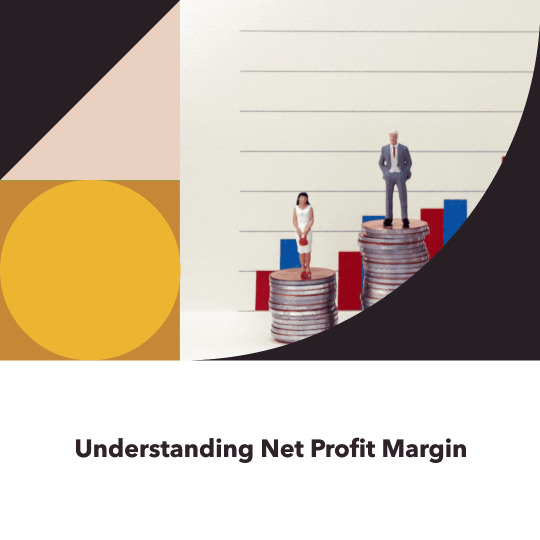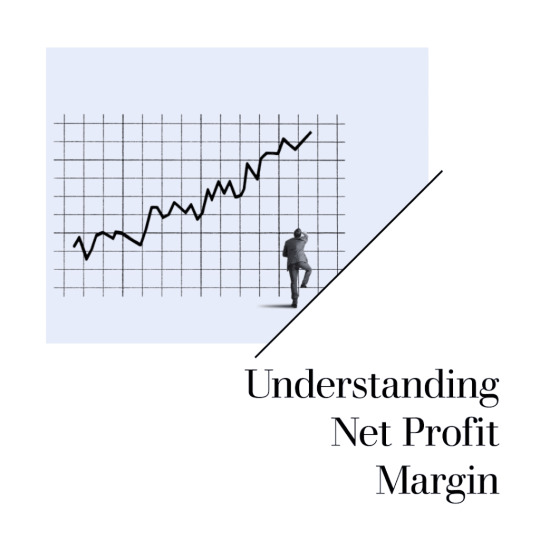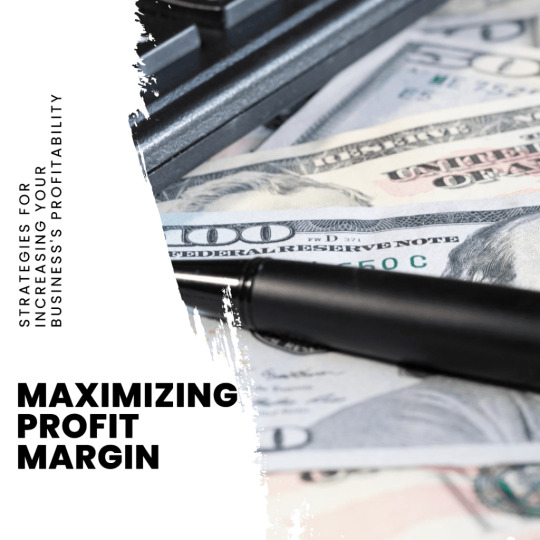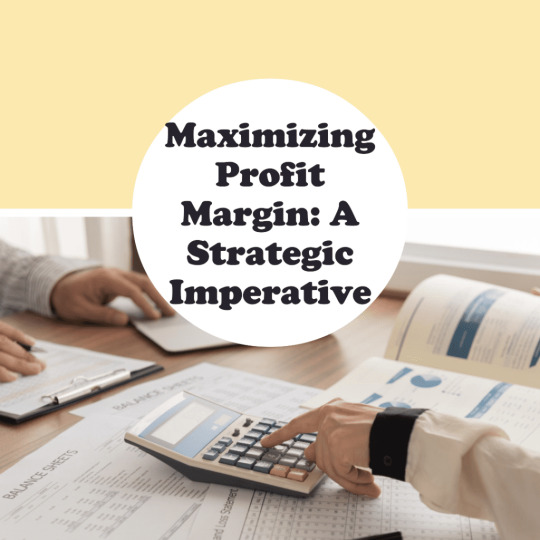#SustainableBusinessPractices
Explore tagged Tumblr posts
Text
Why Hindu Ethics Are the Future of Business Leadership & Success

👉 Introduction – Trust Is the New Currency of Success
👉 "Everything You Know About Business Leadership Is Wrong" The business world is undergoing a silent revolution. Not many realize it yet — but it’s happening right under our noses. Everything you were taught about leadership — the towering CEO, the aggressive innovator, the quarterly-obsessed strategist — is crumbling. If the corporate collapses of the last decade taught us anything, it’s this: what we once called "leadership" is, in fact, systemic failure wearing a suit. Boardroom scandals, greenwashing, mass layoffs disguised as "restructuring," and the endless pursuit of short-term profits have created a leadership vacuum that is impossible to ignore. The old playbook is broken. But here's the hard truth: It was never designed to create trust, sustainability, or true prosperity. It was built to serve narrow interests at the expense of the whole. The Edelman Trust Barometer — one of the most respected global surveys — reveals a chilling trend: - Only 42% of people trust business leaders to do what is right. - 61% believe that government and business leaders are deliberately misleading them. - Trust in traditional leadership is at an all-time low across 28 countries. 👉 This is not just a crisis. 👉 It’s an opportunity. A door is opening — for something ancient, profound, and urgently needed to return. 👉 Pattern Interrupt: Leadership Models Are Breaking Down The stories of leadership failure are not isolated incidents. They are symptoms of a systemically broken model: 🌟 Uber’s toxic workplace culture. 🌟 WeWork’s catastrophic implosion. 🌟 Environmental crimes by global giants hiding behind glossy CSR reports. 🌟 Tech layoffs after record profits, eroding employee loyalty. Each of these collapses has one common denominator: the erosion of trust. Trust — once considered an abstract "nice-to-have" — is now revealed as the core operating currency of successful, sustainable business. Without trust, there is no loyalty. Without loyalty, there is no brand. Without brand, there is no future. In a hyper-connected, hyper-transparent world, the game has changed forever. 👉 Introducing Business Dharma: The Ancient, Revolutionary Model At this crucial crossroads, a new model emerges — or rather, an ancient one re-emerges. A model that predates modern corporations, yet offers a future-proof blueprint for leadership in the 21st century: 👉 Business Dharma. 🌟 Business Dharma is the application of Hindu ethical principles to leadership and commerce. 🌟 It is not about religion — it is about universal truths of right action, integrity, duty, and sustainability. 🌟 It views business as a sacred trust, not merely a vehicle for personal enrichment. In Hindu thought, Dharma means more than just "duty." It represents the cosmic law of balance, truth, and righteous living — the natural order that upholds society and the universe itself. When applied to business, Dharma demands: - Leadership based on self-mastery, not domination. - Decisions rooted in long-term harmony, not short-term greed. - Profits earned through service and value creation, not exploitation. - Organizations structured for the good of all stakeholders, not just shareholders. Business Dharma is radical precisely because it restores what modernity has forgotten: Business is not a separate sphere from ethics. Leadership is not a performance; it is a responsibility. 👉 Bold Promise: Why Hindu Ethics Are the Unavoidable Future of Leadership This article will reveal an uncomfortable but liberating truth: There is no sustainable future for leadership without Hindu ethical principles. Why? Because the very forces that are reshaping our world — 🌟 Conscious consumerism, 🌟 ESG (Environmental, Social, Governance) demands, 🌟 The purpose-driven workforce, 🌟 The call for conscious capitalism, — are all implicitly demanding a Dharma-based approach to leadership, even if they don’t name it that way yet. In the sections that follow, we will explore: - How Hindu Dharma decodes the failures of modern business ethics. - The real meaning of Trust as a strategic, not sentimental, asset. - Case studies of companies (without relying on cliched figures like Gandhi) embodying Dharma principles — and outperforming. - How to practically implement Business Dharma frameworks in 2025 and beyond. By the end, you will see: 👉 Trust is the new currency. 👉 Dharma is the new leadership model. 👉 Hindu Ethics are not just an option — they are the only way forward for businesses that want to survive and thrive. 👉 The Global Collapse of Trust: A Crisis Business Cannot Ignore Let's look at why the collapse of trust is the number one risk facing businesses today: According to Edelman’s 2024 Trust Barometer: - 68% of people globally worry about CEOs being more concerned with profits than people. - 60% say businesses have no moral compass. - The majority believe societal leadership is lacking, and expect businesses to fill the void. 🌟 In short: Consumers, employees, investors — everyone is demanding Business Dharma, whether they realize it or not. And those companies and leaders who don't evolve? They will be left behind. Failure to build trust will cost: - Talent acquisition (Gen Z prioritizes ethics over salary!) - Customer loyalty - Investor confidence - Regulatory freedom In a few years, only companies rooted in Ethical Leadership, Business Dharma, and Trust in Business will remain resilient and profitable.
👉 Why Hindu Ethics in Business Are Revolutionary (and Necessary)
You might wonder: "Why specifically Hindu Ethics?" "Why not general 'values' or 'good practices'?" 🌟 The answer lies in depth. 🌟 Hindu ethics — unlike shallow corporate "value statements" — are not vague platitudes. They offer specific, time-tested frameworks for: - Decision-making under uncertainty (e.g., Krishna’s counsel to Arjuna in the Bhagavad Gita) - Balancing conflicting interests (the Mahabharata's complex ethical dilemmas) - Long-term vision beyond short-term gain (the concept of Lokasangraha — welfare of the world) 🌟 Key Principles Business Leaders Must Understand: - Ahimsa (Non-Harming): Operate businesses that minimize harm to people, communities, and ecosystems. - Satya (Truthfulness): Radical transparency in dealings — with customers, employees, investors. - Asteya (Non-Stealing): Fair pricing, no hidden fees, respecting intellectual property. - Aparigraha (Non-Greed): Purpose over endless accumulation; investing back into people and planet. - Dharma (Righteous Duty): Recognizing business as a service to society, not just a wealth engine. 🌟 These are not religious mandates. They are leadership technologies — thousands of years ahead of their time. 🌟 In fact, modern concepts like ESG, stakeholder capitalism, and triple-bottom-line reporting are just clumsy Western attempts to rediscover what Hindu Dharma understood all along. 👉 Trust as the Core of Sustainable Leadership 🌟 Trust is no longer "soft." It is the hard infrastructure of competitive advantage. 🌟 A Business Dharma leader understands that: - Trust is built by consistent ethical behavior, not marketing slogans. - Trust amplifies brand equity exponentially — loyal customers are not just buyers, but evangelists. - Trust reduces operational risk — transparency and ethics minimize regulatory, legal, and PR disasters. - Trust attracts the best talent — young employees want meaningful work in ethical environments. 🌟 Practical Trust-Building Through Business Dharma: - Proactively disclose not just successes but failures and learnings. - Involve stakeholders — employees, customers, communities — in decision-making. - Practice restraint — saying "no" to unethical profits. - Embed long-termism — align incentives not just to quarterly earnings, but multi-decade sustainability. In short, Trust through Dharma isn't charity. It is strategic dominance. 👉 Real-World Shifts Proving Business Dharma's Rise Consider some examples (without Gandhi or Nehru) illustrating this growing reality: 🌟 Infosys: Founded by Narayana Murthy with an emphasis on trustworthiness and fairness, Infosys maintained global respect even through tech downturns, earning loyalty across markets. 🌟 Amul: India’s largest dairy cooperative, rooted in fair trade principles and empowerment of farmers (not exploitation), remains an ethical powerhouse decades after its inception. 🌟 Tata Group: Ratan Tata’s leadership, driven by service to society above pure profit, has created a conglomerate where brand trust outpaces competitors worldwide. These businesses embody Business Dharma — and have thrived globally, even amid intense competition. 👉 A New Era Demands a New (Ancient) Leadership Model In 2025 and beyond, success will belong to the businesses and leaders who recognize: 👉 Trust is the New Currency. 👉 Ethical Leadership is the Only Sustainable Advantage. 👉 Business Dharma is the Blueprint for a Prosperous Future. 🌟 No amount of advertising can fix a trust deficit. 🌟 No quarterly result can compensate for ethical decay. 🌟 No ESG scorecard can substitute for genuine Dharma-driven action. The time for half-measures is over. The future demands the full embrace of Hindu Ethics in Business. This is not just a trend. It is a return to timeless principles — and a rebirth of leadership itself.
👉👉 The Core of Hindu Ethics – Dharma, Karma, and Leadership
👉 Here's the Hidden Reality About Leadership Qualities In a world flooded with leadership seminars, MBAs, and corporate workshops, an uncomfortable truth lingers: most leadership models today teach how to succeed, not how to lead ethically. This creates a dangerous gap—a cognitive dissonance—between what leaders know and what leaders practice. We celebrate CEOs for profitability, but we rarely question how they achieved it. Hindu Ethics dares to ask the question that modern leadership frameworks are afraid to confront: "Is your success truly aligned with your Duty (Dharma)?" 🌟 In this section, we journey into the sacred essence of Hindu wisdom—Dharma, Karma Yoga, Satyam, Ahimsa, and Seva—to uncover the timeless leadership principles that the future demands. 🌟
👉 Breaking Down Hindu Concepts: The Pillars of Ethical Leadership
👉👉 Dharma: The Unshakeable Foundation of True Leadership In Hindu philosophy, Dharma is the natural law, the code of ethics, the force that sustains life, society, and the cosmos itself. It is not just about personal success or ticking a KPI on a corporate dashboard. It is about doing the right thing, even when it is the hardest thing. It is duty beyond self-interest—an unwavering commitment to truth, responsibility, fairness, and harmony. 🌟 Leadership Without Dharma Is Hollow 🌟 A leader rooted in Dharma doesn't make decisions based solely on profits or personal gain. They consider: - Is this action just? - Will it benefit not just shareholders, but stakeholders — employees, community, planet? - Does it uphold truth and trust? Example: Consider a company facing a major product flaw. The modern "damage control" approach might prioritize hiding the flaw to protect reputation. A leader guided by Dharma would proactively recall the product, accept short-term loss, and rebuild trust — because Truth (Satyam) overrides temporary profitability. 👉👉 Karma Yoga: Leadership as Selfless Service The Bhagavad Gita, the immortal guide to righteous living, introduces Karma Yoga — the path of selfless action without attachment to outcomes. 🌟 The Gita's Model of Leadership 🌟 - Act with excellence (karma), - Without selfish desire (nishkama), - For the greater good (lokasangraha — welfare of the world). A Karma Yogi Leader doesn't obsess over rewards, titles, or applause. Their fulfillment comes from serving a mission larger than themselves. Their authority is not derived from power over others, but from the trust and respect they naturally command. Insight from the Gita (Chapter 3, Verse 19): "Therefore, without attachment, perform the action that must be done; for by performing action without attachment, one attains the Supreme." 🌟 Modern Application: In the startup world, many founders today suffer from "exit fever"—building to sell quickly for profit. A Karma Yoga-inspired entrepreneur would focus on building enduring value, enriching lives, solving real problems, regardless of how long it takes for "reward" to arrive. 👉👉 Satyam, Ahimsa, and Seva: The Leadership Trifecta 🌟 Satyam (Truthfulness): Without truth, trust collapses. Without trust, leadership is a hollow shell. Satyam demands radical honesty—first with oneself, then with the team, and finally with the world. 🌟 Ahimsa (Non-Violence): True leadership does not inflict unnecessary harm—whether on people, planet, or spirit. This doesn’t just mean "don’t physically hurt"—it includes emotional, psychological, and systemic harm. Ahimsa means building organizations where kindness, empathy, and fairness are non-negotiable. 🌟 Seva (Service): The heartbeat of Dharma-led leadership is Seva—sacred service. Leadership is not a ladder to climb. It’s a platform to serve. Seva transforms the workplace from a battlefield of egos into a playground of collective excellence. 🌟 Imagine This: A CEO who truly listens to the ground-level workers. A manager who prioritizes mental health over unrealistic deadlines. A brand that invests in the environment without waiting for consumer backlash. This is Seva in action. This is leadership born of Hindu Ethics. 👉 Hindu vs Modern Leadership Frameworks: A Reality Check AspectModern Leadership ModelHindu Dharma LeadershipPrimary FocusProfit, Personal AdvancementDuty, Collective WelfareDecision DriversMetrics, Incentives, Shareholder ValueDharma, Truth, SustainabilityMotivationExternal rewards (titles, bonuses)Internal fulfillment (Seva, Karma Yoga)Conflict HandlingPR Management, Legal ComplianceTruth-Seeking, Ethical CourageLong-Term ViewQuarters, Fiscal YearsGenerations, Cosmic OrderRelationship to PowerDominate or Influence OthersEmpower and Serve Others 🌟 Key Insight: Modern leadership teaches how to win power. Hindu Dharma teaches how to deserve it. 👉 Revealed: What the Gita Teaches That MBAs Don’t! Most MBA programs around the world teach leadership through: - Strategic thinking - Negotiation - Risk analysis - Market competition But what they don't teach—and what the Gita insists upon—is spiritual authority over oneself. 🌟 According to the Gita: "One must first conquer the self, then lead the world." Without mastering one’s own ego, greed, fear, and insecurity, external leadership becomes toxic. True transformation comes not by learning external tactics, but by practicing internal mastery. 🌟 A Dharma Leader's Journey vs A Conventional Leader's Journey PhaseConventional LeaderDharma LeaderEducationTechnical SkillsInner and Outer WisdomEarly CareerClimbing HierarchiesBuilding CommunitiesMid-Career CrisisBurnout, DissatisfactionRenewal through Seva and PurposeLegacyWealth AccumulationValue Creation for Generations 🌟 The Psychological Trigger Here: If you are only mastering market strategies but not mastering yourself, you are preparing for burnout, not greatness. The Gita reveals: - Leadership is not about control. - Leadership is about service. - Leadership is about standing in truth even when the world crumbles around you. 👉👉 The Urgency: Why Hindu Ethics Are the Future of Business Leadership & Success Today, trust is the scarcest currency in the global economy. Consumers no longer just buy products. They buy principles. They seek brands that align with their values, not just their wallets. 🌟 Studies show that companies that prioritize trust, transparency, and ethical governance outperform their peers by 25%-40% over the long term (Source: Harvard Business Review, Deloitte Insights). 🌟 Another powerful finding: Companies rated high on ESG (Environmental, Social, Governance) factors attract better talent, retain customers longer, and survive crises better. Guess what Hindu Dharma has emphasized for over 5000 years? - Environmental stewardship (Bhumi Devi as Mother Earth) - Social responsibility (Seva and Ahimsa) - Governance based on righteousness, not just regulations (Rajadharma) 👉👉 Closing Reflection: The Silent Revolution Awaits Leadership models built purely on ambition, market domination, and short-term gain are crumbling. We see it in rising employee disengagement, consumer distrust, environmental collapse, and mental health epidemics. 🌟 The silent revolution is ethical. It is spiritual. It is Dharma-based. - Not just conscious capitalism. - Not just ESG checklists. - But a return to timeless principles where Truth, Service, Non-Harm, and Duty reign supreme. Trust is the new wealth. Dharma is the new leadership. Seva is the new strategy. 🌟 And those who embrace Business Dharma today will not just survive tomorrow—they will lead it.
👉 The Crumbling of Western Leadership Models
👉👉 We Need to Talk About the Failure of Modern Corporate Leadership – Now! Modern business leadership is facing a profound identity crisis. Trust in CEOs, corporations, and institutional frameworks has plummeted to historic lows. Around the world, from Wall Street boardrooms to Silicon Valley think tanks, there's a gnawing sense of betrayal, a realization that the promises of "progress," "social good," and "responsibility" were, far too often, marketing slogans — not genuine values. Ethical Leadership, once heralded as the foundation of sustainable success, now appears to have been built on shaky moral ground. Read the full article
#AncientWisdomModernBusiness#BusinessDharma#Consciouscapitalism#CorporateResponsibility#Dharma-BasedLeadership#ESGLeadership(Environmental#EthicalLeadership#Governance)#HinduEthicsinBusiness#Purpose-drivenleadership#Social#SpiritualBusinessModels#Sustainablebusinesspractices#SustainableLeadership#TrustinBusiness
0 notes
Text
Home Inspection in Lachine: Comprehensive Services by Thermo Elite
When it comes to purchasing or maintaining a property in Lachine, ensuring its safety and structural integrity is paramount. A professional home inspection plays a vital role in identifying potential issues and providing homeowners with the peace of mind they deserve. At Thermo Elite, we specialize in providing detailed and reliable home inspection services in Lachine, tailored to meet your unique needs. In this guide, we’ll discuss everything you need to know about home inspections, their benefits, and why Thermo Elite is the trusted name in Lachine.

What is a Home Inspection?
A home inspection is a comprehensive assessment of a property’s condition, conducted by certified professionals. This process evaluates the structural, electrical, plumbing, HVAC (heating, ventilation, and air conditioning), and other essential systems of a house. The goal is to identify any current or potential issues that could affect the property’s safety, functionality, or value.
Whether you’re buying a new home, selling your current property, or simply conducting routine maintenance, a home inspection provides valuable insights to help you make informed decisions.
Key Benefits of a Home Inspection
Identify Hidden ProblemsA home may look perfect on the surface, but hidden problems like faulty wiring, mold, or foundation issues could be lurking. A professional inspection uncovers these issues before they escalate.
Save MoneyDetecting problems early can save homeowners from costly repairs down the line. For example, identifying a small roof leak now can prevent expensive water damage in the future.
Ensure SafetyHome inspections help ensure that the property is safe for you and your family. Issues such as gas leaks, electrical hazards, or structural weaknesses are flagged and addressed promptly.
Negotiation ToolIf you’re buying a home, a detailed inspection report can be used to negotiate repairs or a lower purchase price with the seller.
Peace of MindKnowing the exact condition of a property provides peace of mind and confidence in your investment.
Thermo Elite’s Home Inspection Services in Lachine
Thermo Elite is a leading provider of professional home inspection services in Lachine. Our team of certified inspectors uses advanced tools and techniques to deliver accurate and comprehensive assessments. Here’s what sets us apart:
1. Advanced Thermal Imaging Technology
We utilize state-of-the-art thermal imaging cameras to detect hidden issues that are invisible to the naked eye. This includes identifying moisture intrusion, insulation problems, and electrical hot spots.
2. Comprehensive Inspection Coverage
Our inspections cover every aspect of your property, including:
Roofing: Checking for leaks, damaged shingles, and structural integrity.
Plumbing: Identifying leaks, pipe corrosion, and water pressure issues.
Electrical Systems: Ensuring wiring, outlets, and circuit breakers meet safety standards.
HVAC Systems: Evaluating the efficiency and condition of heating and cooling systems.
Foundation and Structure: Assessing for cracks, settling, or other structural concerns.
Interior and Exterior: Inspecting walls, windows, doors, and flooring for damage or wear.
3. Detailed Inspection Reports
After completing the inspection, we provide a detailed report that includes:
A summary of findings
High-resolution images and thermal imaging scans
Recommendations for repairs or maintenance
4. Certified and Experienced Inspectors
Our inspectors are highly trained and certified professionals with years of experience. They adhere to industry standards and go above and beyond to ensure your satisfaction.
Why Choose Thermo Elite for Home Inspections in Lachine?
Local ExpertiseAs a trusted name in Lachine, we understand the unique challenges faced by homeowners in the area, including weather-related wear and tear and aging infrastructure.
Customer-Centric ApproachAt Thermo Elite, our clients come first. We take the time to answer your questions, explain our findings, and provide actionable solutions.
Affordable PricingWe believe that quality home inspection services should be accessible to everyone. That’s why we offer competitive pricing without compromising on quality.
Quick TurnaroundWe value your time and provide fast scheduling and prompt delivery of inspection reports.
Positive ReputationOur satisfied clients in Lachine and beyond have made Thermo Elite a trusted name in the industry. Our commitment to excellence and integrity sets us apart.
When Should You Schedule a Home Inspection?
Before Buying a HomeProtect your investment by ensuring the property is in good condition before closing the deal.
Before Selling a HomeA pre-listing inspection can help identify and address issues, increasing your home’s market value and reducing the likelihood of surprises during the buyer’s inspection.
Routine MaintenanceRegular inspections help maintain your property’s value and catch small problems before they become big ones.
After Severe Weather EventsIf your home has been exposed to severe weather, such as heavy rain or strong winds, an inspection can assess for any hidden damage.
Steps Involved in a Thermo Elite Home Inspection
Initial ConsultationWe begin by understanding your specific concerns and objectives.
On-Site InspectionOur inspectors conduct a thorough examination of your property using advanced tools and techniques.
Thermal Imaging AnalysisUsing thermal imaging cameras, we detect hidden issues like moisture intrusion, insulation gaps, and electrical hot spots.
Report DeliveryA detailed report is prepared and shared with you, including findings, images, and recommendations.
Follow-Up SupportWe’re always available to answer your questions and guide you through the next steps.
Contact Thermo Elite for Your Home Inspection in Lachine
Don’t leave your property’s condition to chance. Trust Thermo Elite for professional, reliable, and comprehensive home inspection services in Lachine. Our team is committed to helping you make informed decisions and protect your investment.
Contact Us Today!
Phone: (514) 969-5150
Email: [email protected]
Website: https://www.thermoelite.ca
Schedule your home inspection with Thermo Elite and experience the difference of working with Lachine’s trusted experts!
#ThermographicHeatLoss#HeatLossDetection#BusinessEnergyEfficiency#ThermalImaging#EnergySavings#BuildingInsulation#SustainableBusinessPractices#EnergyAudits#ReduceEnergyCosts#GreenBusinessSolutions
0 notes
Text
Australia has emerged as a global leader in sustainable business practices, setting benchmarks in environmental stewardship, social responsibility, and economic resilience.
0 notes
Text
0 notes
Text
Nature's Secrets: How Biomimicry Helps Businesses Thrive #biomimicry #circulareconomy #natureinspiredinnovation #resourceefficiency #sustainablebusinesspractices
#Business#biomimicry#circulareconomy#natureinspiredinnovation#resourceefficiency#sustainablebusinesspractices
0 notes
Text
How to do business in Lakshadweep

Known for its pristine coral islands lying in the Arabian Sea, Lakshadweep offers unique opportunities for entrepreneurs. This blog is a guide for those looking to venture into business in these islands. From understanding the local economy to navigating the legal aspects, let us explore the steps and ideas to set up and grow a business in Lakshadweep.
Understanding the local economy:
Start by gaining an insight into the local economy of Lakshadweep. Subtopics include key infrastructure, key financial contributions, and emerging infrastructure. Whether it is fishing, tourism or traditional handicrafts, economic rationality provides the basis for identifying employment opportunities that match the needs and aspirations of local communities.
Cultural sensitivity and community engagement:
Cultural awareness and community engagement are important factors when working in Lakshadweep. Discuss the importance of observing local customs, traditions, and close community policies. This category emphasizes building relationships with the community, understanding their values, and integrating your business into the fabric of the community for long-term success.
Guidelines for legal process:
Explore the legal scenario governing businesses in Lakshadweep. Subtopics include permit requirements, permits, and compliance with local regulations. Provide insight into business models, legal considerations and any specific requirements of businesses operating in this unique Indian business environment.
Sustainable Business Practices:
The fragile ecosystem of Lakshadweep calls for engagement in sustainable business practices. Discuss the importance of eco-friendly services, waste management strategies and responsible tourism practices. This section highlights how incorporating sustainability into your business strategy not only benefits the local environment but also fits in with Lakshadweep’s cultural ethos.
Materials and Logistics:
Check out the infrastructure and logistical considerations for a successful project in Lakshadweep. Discuss transportation challenges, supply chain management and communication systems. This section provides insights to overcome potential barriers to improve performance in an area with unique geographic characteristics.
Building community partnerships:
Partner with local businesses and entrepreneurs to increase the integration of your business into the community. Subtopics included identifying potential partners and the benefits of supporting joint ventures and local businesses. This section highlights the collaborative approach required to ensure productivity in Lakshadweep.
Conclusion:
Working in Lakshadweep offers a mixture of challenges and opportunities. By understanding local economies, prioritizing cultural sensitivities, adopting regulatory frameworks, adopting sustainable practices, addressing resource concerns and building community partnerships on, entrepreneurs can embark on a rewarding business journey in these scenic islands Measured with emotion.
GoL is a complete service provider to the people of Lakshadweep which operate Tours and Travels, Shore excursion of cruises, Courier Service, Hospitality, Contacts Civil works and Shipping. It stands as a connecting bridge between Mainland and Lakshadweep.
GoL is owned and managed by Islanders with registered head office at Kochi, Kerala and branch office at Amini Island, Lakshadweep. GoL has units in all inhabited Islands of Lakshadweep.
#LakshadweepBusiness#EntrepreneurshipGuide#golventures#entrepreneurialspirit#lakshadweepentrepreneurship#islandlife#lakshadweepislands#lakshadweep#home & lifestyle#sustainablegrowth#business#lakshadweepopportunities#LocalEconomy#CommunityEngagement#LegalRequirements#SustainableBusinessPractices#LogisticsChallenges#CommunityPartnerships#BusinessOpportunities#CulturalSensitivity#EcoFriendlyBusiness#SupplyChainManagement#CollaborativeApproach#LakshadweepCulture#TumblrBlog
0 notes
Text
Corporate Transportation Policies and Best Practices

Ever wonder why corporate transportation policies are a big deal? They're not just about getting from point A to point B. It's about tackling the challenges of employee mobility, pushing for sustainability, and, oh yes, making business operations smoother.
In today's fast-paced world, how we move matters more than ever. And guess what? Implementing effective corporate transportation policies can reduce employee commuting costs by a whopping 20%. Now, that's something to talk about!
Understanding the Need for Corporate Transportation Policies:
We live in a time when cities are bursting at the seams, our planet needs a break, and our people need to feel good. That's where corporate transportation services come in. They're not just a fancy term; they're a necessity.
Imagine cutting down on travel expenses and seeing your employees smile more. And let's not forget the gold star your company gets for being eco-friendly. Talk about hitting several birds with one stone!
Key Elements of Effective Corporate Transportation Policies:
Now, let's dive into the nitty-gritty. Crafting a top-notch transportation policy isn't rocket science, but it does need some thought. First, set goals that make sense - like reducing your carbon footprint or getting more employees to hop onto public transport.
Then, build a policy that covers everything from daily commutes to business trips. But, hey, don't forget to chat with your team. Their input is gold. And once you roll out your plan, keep an eye on it. Tweaking it here and there might be necessary.
Best Practices for Corporate Transportation Policies:
Promoting Sustainable Transportation
Encourage the use of public transport with subsidies and partnerships with local transit agencies.
Facilitate biking and walking by providing amenities like bike racks, showers, and secure storage.
Implement carpooling programs with incentives for participants.
Managing Business Travel
Develop clear travel policies that emphasize eco-friendly transportation and efficient expense management.
Leverage technology for streamlined travel booking and expense tracking.
Promote virtual meetings and video conferencing to minimize unnecessary travel.
Supporting Employee Well-being
Offer flexible work arrangements, like telecommuting, to reduce commute times and improve work-life balance.
Provide transportation assistance for employees facing commuting challenges.
Regularly conduct surveys and focus groups to understand and address employee transportation preferences and needs.
These practices enhance employee satisfaction and well-being and contribute significantly to environmental sustainability and corporate responsibility.
So, there you have it. Corporate transportation policies are more than just rules; they're a pathway to a better, sustainable future. They're about our people, our planet, and our profit. And let's face it, who doesn't want to be part of that?
For a seamless, professional, and top-notch travel experience, check out Awey Black Car Services. Their executive limo services are a class apart, ensuring you travel in style, comfort, and efficiency. Ready to elevate your travel experience? Awey, Black Car Services is just a call away!
#CorporateTransportation#SustainableCommute#EmployeeMobility#GreenTravel#BusinessTravelSolutions#EcoFriendlyCommute#TransportationInnovation#CorporateTravelPolicy#EfficientCommute#SustainableBusinessPractices#EmployeeWellbeing#CorporateResponsibility#SmartCommute#BusinessTravelManagement#EnvironmentallyFriendlyTrave
0 notes
Text
Achieving Financial Success with a Chartered Professional Accountant

In today's dynamic financial world, the path to lasting financial success may seem elusive. Whether you're an individual securing your financial future or a business aiming to excel in a competitive market, the guidance of a Chartered Professional Accountant (CPA) is your key to unlocking financial potential.
The CPA Advantage
A Chartered Professional Accountant is more than a financial expert; they are your strategic partner in the journey toward financial success. CPAs are highly trained professionals with deep knowledge of accounting, tax laws, and financial strategies. They bring a wealth of expertise to ensure your financial decisions are well-informed and optimized.
Expert Financial Guidance
CPAs excel at assessing your financial situation, identifying areas for improvement, and providing tailored advice. Whether you're an individual making wise investments or a business seeking cost-saving strategies, a CPA offers expert guidance to navigate the intricate financial landscape, encompassing tax regulations and financial reporting.
Tax Optimization
One of the primary advantages of a CPA is their ability to optimize your tax situation. They keep up-to-date with the latest tax laws and regulations, making sure you take full advantage of available deductions and credits. This not only saves you money but also reduces the risk of expensive audits.
Business Growth and Longevity
For businesses, CPAs play a pivotal role in achieving financial success. They assist in financial forecasting, budgeting, and strategic planning. With a CPA's guidance, businesses can make informed decisions that drive growth and ensure long-term sustainability. They also help with financial audits, enhancing transparency and building investor trust.
The Journey to Financial Success
While a Chartered Professional Accountant can be a game-changer, achieving financial success also requires your active participation. Here are some essential steps to ensure financial success:
Setting Clear Goals
Precisely define your financial goals, whether it's saving for retirement, purchasing a home, or growing your business. A CPA can help you create a roadmap to reach these objectives.
Effective Budgeting
Develop a realistic budget that aligns with your financial goals. A CPA can provide valuable insights into budgeting techniques that suit your specific situation.
Risk Management
Understanding and mitigating financial risks is crucial. CPAs can help you assess and manage risk effectively, ensuring the protection of your assets.
Investment Strategies
Make informed investment decisions with your CPA's guidance. They can help you build a diversified portfolio that maximizes returns and minimizes risk.
Continuous Learning
Stay informed about financial trends and developments. A CPA can keep you updated on the latest financial opportunities and threats.
In Conclusion
In your pursuit of financial success, partnering with a Chartered Professional Accountant is a strategic and wise choice. They bring expertise, knowledge, and a wealth of experience to guide you through the complexities of the financial world. By collaborating with your CPA and adhering to these key financial principles, you can unlock the door to financial success and secure a brighter financial future. Don't wait; embark on your journey today with the support of a trusted CPA.
#FinancialSuccess#CPAExpertise#CharteredAccountants#SmartFinancialChoices#TaxSavings#BudgetingWisdom#BusinessGrowthStrategies#FinancialMastery#InvestmentTips#RiskMitigation#MoneyManagement#FinancialPlanning#WealthBuilding#SustainableBusinessPractices#TaxOptimization#FinancialTransparency#FinancialEducation#InvestingSmartly#FinancialGoalsAchieved#ExpertFinancialAdvice
0 notes
Text

Reliable and trusted H/507/1307 Sustainable Business Practices Assignment Help! Download Higher National Diploma course Solution now! Order Instant Solution on WhatsApp: +44 141 628 6080!!
#H_507_1307 #SustainableBusinessPractices #AssignmentHelp #Solution #AssessmentHelp #HND #HNC #topassignmenthelpservices #UKtopwritingservice #BTEC #OnlineTutor #AskTutor #Diploma #AssessmentWritingService #UK
0 notes
Text
Sustainable Business Practices in Dubai: What You Need to Know
Dubai, the bustling city in the United Arab Emirates (UAE), has long been known for its lavish lifestyle, iconic skyscrapers, and luxury shopping destinations. However, in recent years, Dubai has also made significant strides in adopting sustainable business practices.

Sustainable business practices refer to those business practices that aim to reduce the negative impact on the environment and society while also maintaining economic growth. In Dubai, sustainable business practices are gaining momentum, and businesses of all sizes are making efforts to adopt them. Here's what you need to know about sustainable offshore business setup in Dubai.
Government Initiatives
The Dubai government has taken several steps to promote sustainable business practices in the city. In 2012, the Dubai Supreme Council of Energy launched the Dubai Integrated Energy Strategy 2030, which aims to reduce energy consumption by 30% by 2030. The government has also launched several initiatives to promote renewable energy, such as the Mohammed bin Rashid Al Maktoum Solar Park, which is one of the largest solar parks in the world.
Green Building Standards
Dubai has implemented green building standards to encourage the construction of environmentally sustainable buildings. The Dubai Municipality has introduced the Green Building Regulations and Specifications, which provide guidelines for the design, construction, and operation of green buildings. The regulations cover aspects such as energy efficiency, water conservation, waste management, and indoor air quality.
Also read about more: How to start a limited liability company in Dubai?
Sustainable Transportation
Dubai has invested heavily in sustainable transportation, including electric vehicles and public transportation systems. The city has introduced a fleet of electric buses and taxis, and the Dubai Metro is one of the most extensive driver less metro systems in the world. Additionally, the city has implemented a bike-sharing program to encourage residents to cycle and reduce their carbon footprint.
Waste Management
Dubai generates a significant amount of waste, and the government has implemented several initiatives to manage it sustainably. The Dubai Municipality has introduced a waste segregation program, where households and new company setup in Dubai are required to separate their waste into recyclable and non-recyclable waste. The municipality also operates several recycling centers and waste-to-energy plants to convert waste into energy.
Sustainable Tourism
Tourism is a significant contributor to Dubai's economy, and the city is making efforts to promote sustainable tourism. Dubai has launched the Dubai Sustainable Tourism Initiative, which aims to promote sustainable tourism practices and reduce the negative impact of tourism on the environment and society.
Conclusion
In conclusion, sustainable business practices are gaining momentum in Dubai, and businesses need to embrace them to stay competitive and contribute to the city's sustainable growth. The Dubai government has taken several initiatives to promote sustainable business practices, and businesses need to align themselves with these initiatives. Adopting sustainable business practices not only helps businesses reduce their impact on the environment Recorporate also helps them attract eco-conscious customers and investors.
If you need any assistance in setting up a business or you need more information about the sustainable business practices in Dubai, you may contact us on +971-58-586-5477 and email us via [email protected].
Original Source: https://bit.ly/3z62K5X
2 notes
·
View notes
Text
Profit Margin:100 Complete Guide to Profit Margin Calculation

Understanding your profit margins is not only crucial in the business world; it is necessary. Profit margins are a crucial measure of a company's financial stability, effectiveness, and potential for expansion. How do you, however, calculate profit margin? What elements must you take into account? This comprehensive guide will provide the information you need to understand profit margins, answering these and other related questions.
Profit Margins: An Overview

Profit Margins: An Overview Profit refers to a company's financial gain after deducting all its expenses, including employee salaries and benefits. They reveal how well a business profits from its sales and operational operations. Profit Margins: Their Importance Profit margins are significant to firms because they show how well they run their operations. A corporation with a high-profit margin typically indicates successful operations and effective cost management compared to its competitors. Essential Phrases to Understand: Gross Profit, Net Profit, and More Before learning how to calculate profit margins, it's crucial to comprehend the following terms: The remaining profit is known as gross profit after subtracting the expenses involved in producing and offering a company's goods or services. The difference between the gross profit and all other operational costs, such as taxes and interest, is the net profit, also known as net income. The term "profit" refers to the amount of money that may be made from selling a product. It displays the proportion of sales that have generated profits.
The Basics of Profit Margin Calculation

The Basics Of Profit Margin Calculation Calculating the profit margin is more superficial than it might seem, requiring understanding your business's financials and basic arithmetic. A Deep Dive Into The Profit Margin Formula The profit margin formula is straightforward: (Net Profit / Revenue) * 100 = Profit Margin What is the best formula for profit margins? It is generally agreed that the formula given above is the best and most straightforward technique to calculate profit margin. It provides a percentage that illustrates the real profit as a percentage of each sales dollar. Learning About Gross Profit Margin A particular kind of profit margin called a gross profit margin, concentrates on gross profit. The following is how to calculate it: (Gross Profit / Revenue) * 100 = Gross Profit Margin Gross Profit Margin Calculation You need to know your gross profit and sales to calculate the gross profit margin. To calculate your gross profit, deduct your cost of goods sold (COGS) from your revenue. To calculate the gross profit margin percentage, divide the gross profit by the total revenue and multiply the result by 100. Net Profit Margin: An Overview

Net Profit Margin: An Overview Another crucial indicator of profitability is the net profit margin. The following is how to calculate it: (Net Profit / Revenue) * 100 = Net Profit Margin. Net Profit Margin Calculation You need to know your net profit and sales to calculate the net profit margin. To calculate your net profit, deduct all operational costs from your gross profit, including taxes and interest. To calculate the net profit margin percentage, divide the net profit by the total revenue and multiply the result by 100. The Function of Cost of Goods Sold (COGS) in Calculating Profit Margin One crucial component in determining profit margins is the cost of goods sold (COGS). It includes the total cost of producing the goods or services a business sells. The Importance of Sales Revenue in Calculating Profit Margin Sales revenue is the sum of the money from selling goods or services. It serves as the foundation for figuring out profit margins. More sales revenue may translate into larger profit margins if expenses are successfully managed.
What Does Profit Margin Percentage Mean, and How Is It Calculated
The profit margin percentage is a helpful indicator displaying the good sales proportion. It's an excellent technique to contrast the profitability of various businesses and sectors. The Profit Margin Percentage Concept By dividing net profit by sales and multiplying the result by 100, one may calculate profit margin %. It gives a precise picture of the profitability and effectiveness of a business. A profit margin percentage is what? The net income made for every dollar of sales produced is measured by the profitability ratio known as the profit margin percentage. It's a vital performance indicator that sheds light on how profitable a business is. Making a Profit Margin Calculation Divide your net profit margin by your sales and multiply the result by 100 to calculate your profit margin percentage. Doing this lets you determine what proportion of each sales dollar is profit. Examples of Real-World Profit Margin Calculations Suppose your business makes a $50,000 net profit on $20,000 in sales. Your profit margin would be (50,000 / 200,000) * 100 = 25% using the formula for profit margin percentage. Accordingly, 25 cents of every dollar of revenue are profits. What does a 20% profit margin mean? If your profit margin A 20% profit margin means you make $0.20 for every $1. Many sectors see this as a good profit margin. The Effect of Variable Costs on Profit Margin Percentage: Understanding Costs that vary concerning the quantity of goods or services a business generates are known as variable costs. Materials, direct labor expenses, and credit card processing fees are a few examples of them. It's critical to efficiently control these expenditures since high variable costs might lower your profit margin percentage. The Function of Fixed Costs in Calculating Profit Margin Percentage Costs that remain constant regardless of how many goods or services are produced are known as fixed costs. These might consist of rent, wages, and insurance. The overall amount of profit that may be earned is impacted by these expenses, even if they have no direct influence on the profit margin %.
Calculating Advanced Profit Margin
After fully grasping the fundamentals, you may explore more complex profit margin calculations. The more you invest in your business, the higher the potential returns. A 30% Margin Calculation It would be best to determine your cost of goods sold (COGS) to calculate a 30% margin. When you have it, use the formula below: COGS / (1 - 0.30) = Selling Price You may use this to determine the selling price you should choose to generate a 30% profit margin. Examples of 30% Margin Calculations in Practice Suppose your COGS is $70. your selling price would be $70 / (1 - 0.30) = $100. It indicates that to have a profit margin of 30%. You must offer your goods for $100. Using Margin Calculators to Calculate Profit Margin A simple tool that might make calculating profit margins easier is a margin calculator. They are available online and often cost nothing to use. The Advantages of Margin Calculators Using a margin calculator may save time and effort, mainly if working with complex numbers. They may also assist you in avoiding mistakes and guaranteeing the accuracy of your estimates for the profit margin. Operating Expenses' Function in Complex Profit Margin Calculations In addition to the cost of goods sold, operating expenditures include all other costs related to running your business. These range from utilities to rent and other costs. These expenses must be considered while calculating profit margins. As Total Revenue Increases, So Does Your Potential Profit Margin

As Total Revenue Increases, So Does Your Potential Profit Margin Total revenue, the sum of all a company's earnings, is significant in determining profit margin. As your revenue increases, your potential profit margin rises.
Analysis of profit margins is essential for business success.
You may better understand the financial health of your business and pinpoint opportunities for development using profit margin analysis, a potent tool. What Business Decisions Can Benefit from Profit Margin Analysis? Analysis of profit margins may provide insightful information that helps guide strategic choices. Concentrating your efforts in these areas could assist you in determining which goods or services are more lucrative. Business Analysis Using Profit Margin Ratios Profit margin ratios, including gross profit margin and net profit margin, may provide you with a more in-depth picture of how profitable your business is. You can see patterns and make wise judgments by comparing these ratios over time or to industry standards. What the Profit Margin Ratio Means The term "profitable" describes a company's capacity to generate income. A firm with a high-profit margin ratio is likely very lucrative, whereas a low ratio may point to inefficiencies or possible financial problems. The Function of Profit Margin in Evaluating a Company's Financial Health A business's profit margin is a vital sign of its financial health. While a low-profit margin may portend possible financial challenges, a large profit margin signals a prosperous business successfully controlling its expenses. How to Improve Profit Margins by Increasing Efficiency Enhancing productivity may have a significant influence on your profit margins. It may include optimizing processes, cutting waste, raising productivity, etc.
Different Industries' Profit Margin
Due to factors like rivalry, market circumstances, and cost structures, profit margins may change dramatically across various sectors. Create realistic profit margin goals for your business by being aware of these distinctions. E-commerce Industry Profit Margin Considerations Competition, client acquisition expenses, and transportation costs are just a few examples of variables that affect profit margins in the e-commerce sector. When calculating and examining profit margins, it's critical to consider these elements. Understanding Wholesale Business Profit Margins Due to the wholesale business's large volume and low-margin characteristics, profit margins are often smaller. However, effective inventory management and solid connections with suppliers may increase profit margins.
Investigating Profit Margin in Various Business Models
The business model may have a substantial impact on the profit margin. Let's examine the methods used to calculate and analyze profit margins by various categories of enterprises. Service-Based Businesses' Profit Margin Compared to product-based organizations, service-based enterprises often have distinct cost structures. Instead of tangible goods, labor and time are the primary expenditures in this situation. The Effect of Labor Costs on Profit Margins in the Service Sector Labor expenditures have a significant influence on service-based enterprises' profit margins. Increased profit margins may result from effective labor cost management techniques, such as productivity upgrades or tactical scheduling. Manufacturing Businesses' Profit Margin Raw materials, labor, and manufacturing overheads are just a few expenditures that manufacturing enterprises often have to cope with. These elements have a significant influence on profit margins. Retail Businesses' Profit Margin Buy-and-sell models are expected in retail organizations, and elements, including inventory turnover, operational expenses, and pricing strategy, often impact these firms' profit margins. Inventory Turnover's Effect on Retail Profit Margins The primary determinant of retail profit margins is inventory turnover. A retailer's profit margin is more likely to increase the quicker it can sell its product. Gaining control of your inventory may increase your profit margins.
Profit Margin's Function in Business Strategy

Profit Margin's Function In Business Strategy Profit margin is a strategic instrument that may help businesses make choices and spur development, not merely a financial number. Pricing Strategy Determined by Profit Margin In deciding on a price plan, profit margin is a crucial component. You may establish pricing that assures profitability while being competitive by being aware of your profit margins. Benchmarking business performance using profit margin A benchmark for business success might be profit margin. You may assess your business's financial health and competitive position by comparing your profit margins to those of significant rivals or industry averages. Profit Margin's Impact on Investment Decisions For investors, the profit margin is a crucial factor. A business with a large profit margin may be successful and operate well, making it a desirable investment.
A Tool for Growth and Sustainability: Profit Margin
A measure of profitability, the profit margin is more than that. It's a tool that may support firms in identifying prospects for expansion and sustainability. Business Growth and Profit Margin Knowing your profit margin might help you identify possible opportunities for business expansion. For instance, a high-profit margin on a certain product line may indicate a market need you may satisfy by stepping up production or marketing initiatives. The Impact of Profit Margin on Decisions Regarding Expansion The decision to introduce a new product or enter a new market is made after thoroughly examining the market. A large profit margin in your existing activities may indicate that you have a solid financial base to expand. Sustainability of the business and profit margin In the long term, a high-profit margin is essential to the viability of a business. The Role of Profit Margin in Financial Resilience A healthy profit margin supports financial resilience by acting as a safety net against unforeseen expenses or declines in income. Additionally, it offers the financial means for investing in crucial long-term business viability areas, including innovation, employee development, and market growth.
Gaining a Competitive Advantage Through Profit Margin
Understanding your profit margin might give you a significant advantage in today's cutthroat business world. Measurement of Operational Efficiency Using Profit Margin A large profit margin may indicate operational effectiveness, which is crucial for gaining a competitive edge. A company must first determine its target market to enhance the likelihood of a successful outcome in its operations. Making Strategic Decisions Using Profit Margin Profit margin is a strategic tool as well as a financial statistic. Knowing your profit margin, you can improve your competitive position by making strategic pricing, cost control, and investment decisions. Profit Margin's Function in Pricing Strategy Pricing strategy heavily depends on profit margin. Knowing your product's profit margin can enable you to establish pricing that will draw buyers while maintaining profitability.
The Strategic Influence of Profit Margin
Business success depends on understanding and controlling profit margins. It is a strategic instrument that may promote development, sustainability, and competitive advantage rather than only serving as a measure of profitability. Wrapping Up: The Power of Profit Margin In the hands of business owners, the profit margin is a potent instrument. You may obtain critical insights into the financial health of your business, spot areas for improvement in efficiency and growth, and make successful strategic choices by learning how to calculate and evaluate profit margins. Conclusion: Recognize the Influence of Profit Margin Profit margin is crucial to successful businesses, not merely a financial number. So, recognize the influence of profit margin. Recognize, examine, and utilize it as the foundation for your strategic choices. Your bank account will be grateful. Read the full article
#BusinessExpansion#BusinessGrowth#BusinessPerformance#BusinessResilience#BusinessStrategy#BusinessSuccess#BusinessTransformation#CostManagement#EconomicUncertainty#FinancialMetric#PricingStrategy#ProfitMargin#ProfitMarginCalculation#ProfitMarginOptimization#SustainableBusinessPractices
0 notes
Text
Why Hindu Ethics Are the Future of Business Leadership & Success

👉 Introduction – Trust Is the New Currency of Success
👉 "Everything You Know About Business Leadership Is Wrong" The business world is undergoing a silent revolution. Not many realize it yet — but it’s happening right under our noses. Everything you were taught about leadership — the towering CEO, the aggressive innovator, the quarterly-obsessed strategist — is crumbling. If the corporate collapses of the last decade taught us anything, it’s this: what we once called "leadership" is, in fact, systemic failure wearing a suit. Boardroom scandals, greenwashing, mass layoffs disguised as "restructuring," and the endless pursuit of short-term profits have created a leadership vacuum that is impossible to ignore. The old playbook is broken. But here's the hard truth: It was never designed to create trust, sustainability, or true prosperity. It was built to serve narrow interests at the expense of the whole. The Edelman Trust Barometer — one of the most respected global surveys — reveals a chilling trend: - Only 42% of people trust business leaders to do what is right. - 61% believe that government and business leaders are deliberately misleading them. - Trust in traditional leadership is at an all-time low across 28 countries. 👉 This is not just a crisis. 👉 It’s an opportunity. A door is opening — for something ancient, profound, and urgently needed to return. 👉 Pattern Interrupt: Leadership Models Are Breaking Down The stories of leadership failure are not isolated incidents. They are symptoms of a systemically broken model: 🌟 Uber’s toxic workplace culture. 🌟 WeWork’s catastrophic implosion. 🌟 Environmental crimes by global giants hiding behind glossy CSR reports. 🌟 Tech layoffs after record profits, eroding employee loyalty. Each of these collapses has one common denominator: the erosion of trust. Trust — once considered an abstract "nice-to-have" — is now revealed as the core operating currency of successful, sustainable business. Without trust, there is no loyalty. Without loyalty, there is no brand. Without brand, there is no future. In a hyper-connected, hyper-transparent world, the game has changed forever. 👉 Introducing Business Dharma: The Ancient, Revolutionary Model At this crucial crossroads, a new model emerges — or rather, an ancient one re-emerges. A model that predates modern corporations, yet offers a future-proof blueprint for leadership in the 21st century: 👉 Business Dharma. 🌟 Business Dharma is the application of Hindu ethical principles to leadership and commerce. 🌟 It is not about religion — it is about universal truths of right action, integrity, duty, and sustainability. 🌟 It views business as a sacred trust, not merely a vehicle for personal enrichment. In Hindu thought, Dharma means more than just "duty." It represents the cosmic law of balance, truth, and righteous living — the natural order that upholds society and the universe itself. When applied to business, Dharma demands: - Leadership based on self-mastery, not domination. - Decisions rooted in long-term harmony, not short-term greed. - Profits earned through service and value creation, not exploitation. - Organizations structured for the good of all stakeholders, not just shareholders. Business Dharma is radical precisely because it restores what modernity has forgotten: Business is not a separate sphere from ethics. Leadership is not a performance; it is a responsibility. 👉 Bold Promise: Why Hindu Ethics Are the Unavoidable Future of Leadership This article will reveal an uncomfortable but liberating truth: There is no sustainable future for leadership without Hindu ethical principles. Why? Because the very forces that are reshaping our world — 🌟 Conscious consumerism, 🌟 ESG (Environmental, Social, Governance) demands, 🌟 The purpose-driven workforce, 🌟 The call for conscious capitalism, — are all implicitly demanding a Dharma-based approach to leadership, even if they don’t name it that way yet. In the sections that follow, we will explore: - How Hindu Dharma decodes the failures of modern business ethics. - The real meaning of Trust as a strategic, not sentimental, asset. - Case studies of companies (without relying on cliched figures like Gandhi) embodying Dharma principles — and outperforming. - How to practically implement Business Dharma frameworks in 2025 and beyond. By the end, you will see: 👉 Trust is the new currency. 👉 Dharma is the new leadership model. 👉 Hindu Ethics are not just an option — they are the only way forward for businesses that want to survive and thrive. 👉 The Global Collapse of Trust: A Crisis Business Cannot Ignore Let's look at why the collapse of trust is the number one risk facing businesses today: According to Edelman’s 2024 Trust Barometer: - 68% of people globally worry about CEOs being more concerned with profits than people. - 60% say businesses have no moral compass. - The majority believe societal leadership is lacking, and expect businesses to fill the void. 🌟 In short: Consumers, employees, investors — everyone is demanding Business Dharma, whether they realize it or not. And those companies and leaders who don't evolve? They will be left behind. Failure to build trust will cost: - Talent acquisition (Gen Z prioritizes ethics over salary!) - Customer loyalty - Investor confidence - Regulatory freedom In a few years, only companies rooted in Ethical Leadership, Business Dharma, and Trust in Business will remain resilient and profitable.
👉 Why Hindu Ethics in Business Are Revolutionary (and Necessary)
You might wonder: "Why specifically Hindu Ethics?" "Why not general 'values' or 'good practices'?" 🌟 The answer lies in depth. 🌟 Hindu ethics — unlike shallow corporate "value statements" — are not vague platitudes. They offer specific, time-tested frameworks for: - Decision-making under uncertainty (e.g., Krishna’s counsel to Arjuna in the Bhagavad Gita) - Balancing conflicting interests (the Mahabharata's complex ethical dilemmas) - Long-term vision beyond short-term gain (the concept of Lokasangraha — welfare of the world) 🌟 Key Principles Business Leaders Must Understand: - Ahimsa (Non-Harming): Operate businesses that minimize harm to people, communities, and ecosystems. - Satya (Truthfulness): Radical transparency in dealings — with customers, employees, investors. - Asteya (Non-Stealing): Fair pricing, no hidden fees, respecting intellectual property. - Aparigraha (Non-Greed): Purpose over endless accumulation; investing back into people and planet. - Dharma (Righteous Duty): Recognizing business as a service to society, not just a wealth engine. 🌟 These are not religious mandates. They are leadership technologies — thousands of years ahead of their time. 🌟 In fact, modern concepts like ESG, stakeholder capitalism, and triple-bottom-line reporting are just clumsy Western attempts to rediscover what Hindu Dharma understood all along. 👉 Trust as the Core of Sustainable Leadership 🌟 Trust is no longer "soft." It is the hard infrastructure of competitive advantage. 🌟 A Business Dharma leader understands that: - Trust is built by consistent ethical behavior, not marketing slogans. - Trust amplifies brand equity exponentially — loyal customers are not just buyers, but evangelists. - Trust reduces operational risk — transparency and ethics minimize regulatory, legal, and PR disasters. - Trust attracts the best talent — young employees want meaningful work in ethical environments. 🌟 Practical Trust-Building Through Business Dharma: - Proactively disclose not just successes but failures and learnings. - Involve stakeholders — employees, customers, communities — in decision-making. - Practice restraint — saying "no" to unethical profits. - Embed long-termism — align incentives not just to quarterly earnings, but multi-decade sustainability. In short, Trust through Dharma isn't charity. It is strategic dominance. 👉 Real-World Shifts Proving Business Dharma's Rise Consider some examples (without Gandhi or Nehru) illustrating this growing reality: 🌟 Infosys: Founded by Narayana Murthy with an emphasis on trustworthiness and fairness, Infosys maintained global respect even through tech downturns, earning loyalty across markets. 🌟 Amul: India’s largest dairy cooperative, rooted in fair trade principles and empowerment of farmers (not exploitation), remains an ethical powerhouse decades after its inception. 🌟 Tata Group: Ratan Tata’s leadership, driven by service to society above pure profit, has created a conglomerate where brand trust outpaces competitors worldwide. These businesses embody Business Dharma — and have thrived globally, even amid intense competition. 👉 A New Era Demands a New (Ancient) Leadership Model In 2025 and beyond, success will belong to the businesses and leaders who recognize: 👉 Trust is the New Currency. 👉 Ethical Leadership is the Only Sustainable Advantage. 👉 Business Dharma is the Blueprint for a Prosperous Future. 🌟 No amount of advertising can fix a trust deficit. 🌟 No quarterly result can compensate for ethical decay. 🌟 No ESG scorecard can substitute for genuine Dharma-driven action. The time for half-measures is over. The future demands the full embrace of Hindu Ethics in Business. This is not just a trend. It is a return to timeless principles — and a rebirth of leadership itself.
👉👉 The Core of Hindu Ethics – Dharma, Karma, and Leadership
👉 Here's the Hidden Reality About Leadership Qualities In a world flooded with leadership seminars, MBAs, and corporate workshops, an uncomfortable truth lingers: most leadership models today teach how to succeed, not how to lead ethically. This creates a dangerous gap—a cognitive dissonance—between what leaders know and what leaders practice. We celebrate CEOs for profitability, but we rarely question how they achieved it. Hindu Ethics dares to ask the question that modern leadership frameworks are afraid to confront: "Is your success truly aligned with your Duty (Dharma)?" 🌟 In this section, we journey into the sacred essence of Hindu wisdom—Dharma, Karma Yoga, Satyam, Ahimsa, and Seva—to uncover the timeless leadership principles that the future demands. 🌟
👉 Breaking Down Hindu Concepts: The Pillars of Ethical Leadership
👉👉 Dharma: The Unshakeable Foundation of True Leadership In Hindu philosophy, Dharma is the natural law, the code of ethics, the force that sustains life, society, and the cosmos itself. It is not just about personal success or ticking a KPI on a corporate dashboard. It is about doing the right thing, even when it is the hardest thing. It is duty beyond self-interest—an unwavering commitment to truth, responsibility, fairness, and harmony. 🌟 Leadership Without Dharma Is Hollow 🌟 A leader rooted in Dharma doesn't make decisions based solely on profits or personal gain. They consider: - Is this action just? - Will it benefit not just shareholders, but stakeholders — employees, community, planet? - Does it uphold truth and trust? Example: Consider a company facing a major product flaw. The modern "damage control" approach might prioritize hiding the flaw to protect reputation. A leader guided by Dharma would proactively recall the product, accept short-term loss, and rebuild trust — because Truth (Satyam) overrides temporary profitability. 👉👉 Karma Yoga: Leadership as Selfless Service The Bhagavad Gita, the immortal guide to righteous living, introduces Karma Yoga — the path of selfless action without attachment to outcomes. 🌟 The Gita's Model of Leadership 🌟 - Act with excellence (karma), - Without selfish desire (nishkama), - For the greater good (lokasangraha — welfare of the world). A Karma Yogi Leader doesn't obsess over rewards, titles, or applause. Their fulfillment comes from serving a mission larger than themselves. Their authority is not derived from power over others, but from the trust and respect they naturally command. Insight from the Gita (Chapter 3, Verse 19): "Therefore, without attachment, perform the action that must be done; for by performing action without attachment, one attains the Supreme." 🌟 Modern Application: In the startup world, many founders today suffer from "exit fever"—building to sell quickly for profit. A Karma Yoga-inspired entrepreneur would focus on building enduring value, enriching lives, solving real problems, regardless of how long it takes for "reward" to arrive. 👉👉 Satyam, Ahimsa, and Seva: The Leadership Trifecta 🌟 Satyam (Truthfulness): Without truth, trust collapses. Without trust, leadership is a hollow shell. Satyam demands radical honesty—first with oneself, then with the team, and finally with the world. 🌟 Ahimsa (Non-Violence): True leadership does not inflict unnecessary harm—whether on people, planet, or spirit. This doesn’t just mean "don’t physically hurt"—it includes emotional, psychological, and systemic harm. Ahimsa means building organizations where kindness, empathy, and fairness are non-negotiable. 🌟 Seva (Service): The heartbeat of Dharma-led leadership is Seva—sacred service. Leadership is not a ladder to climb. It’s a platform to serve. Seva transforms the workplace from a battlefield of egos into a playground of collective excellence. 🌟 Imagine This: A CEO who truly listens to the ground-level workers. A manager who prioritizes mental health over unrealistic deadlines. A brand that invests in the environment without waiting for consumer backlash. This is Seva in action. This is leadership born of Hindu Ethics. 👉 Hindu vs Modern Leadership Frameworks: A Reality Check AspectModern Leadership ModelHindu Dharma LeadershipPrimary FocusProfit, Personal AdvancementDuty, Collective WelfareDecision DriversMetrics, Incentives, Shareholder ValueDharma, Truth, SustainabilityMotivationExternal rewards (titles, bonuses)Internal fulfillment (Seva, Karma Yoga)Conflict HandlingPR Management, Legal ComplianceTruth-Seeking, Ethical CourageLong-Term ViewQuarters, Fiscal YearsGenerations, Cosmic OrderRelationship to PowerDominate or Influence OthersEmpower and Serve Others 🌟 Key Insight: Modern leadership teaches how to win power. Hindu Dharma teaches how to deserve it. 👉 Revealed: What the Gita Teaches That MBAs Don’t! Most MBA programs around the world teach leadership through: - Strategic thinking - Negotiation - Risk analysis - Market competition But what they don't teach—and what the Gita insists upon—is spiritual authority over oneself. 🌟 According to the Gita: "One must first conquer the self, then lead the world." Without mastering one’s own ego, greed, fear, and insecurity, external leadership becomes toxic. True transformation comes not by learning external tactics, but by practicing internal mastery. 🌟 A Dharma Leader's Journey vs A Conventional Leader's Journey PhaseConventional LeaderDharma LeaderEducationTechnical SkillsInner and Outer WisdomEarly CareerClimbing HierarchiesBuilding CommunitiesMid-Career CrisisBurnout, DissatisfactionRenewal through Seva and PurposeLegacyWealth AccumulationValue Creation for Generations 🌟 The Psychological Trigger Here: If you are only mastering market strategies but not mastering yourself, you are preparing for burnout, not greatness. The Gita reveals: - Leadership is not about control. - Leadership is about service. - Leadership is about standing in truth even when the world crumbles around you. 👉👉 The Urgency: Why Hindu Ethics Are the Future of Business Leadership & Success Today, trust is the scarcest currency in the global economy. Consumers no longer just buy products. They buy principles. They seek brands that align with their values, not just their wallets. 🌟 Studies show that companies that prioritize trust, transparency, and ethical governance outperform their peers by 25%-40% over the long term (Source: Harvard Business Review, Deloitte Insights). 🌟 Another powerful finding: Companies rated high on ESG (Environmental, Social, Governance) factors attract better talent, retain customers longer, and survive crises better. Guess what Hindu Dharma has emphasized for over 5000 years? - Environmental stewardship (Bhumi Devi as Mother Earth) - Social responsibility (Seva and Ahimsa) - Governance based on righteousness, not just regulations (Rajadharma) 👉👉 Closing Reflection: The Silent Revolution Awaits Leadership models built purely on ambition, market domination, and short-term gain are crumbling. We see it in rising employee disengagement, consumer distrust, environmental collapse, and mental health epidemics. 🌟 The silent revolution is ethical. It is spiritual. It is Dharma-based. - Not just conscious capitalism. - Not just ESG checklists. - But a return to timeless principles where Truth, Service, Non-Harm, and Duty reign supreme. Trust is the new wealth. Dharma is the new leadership. Seva is the new strategy. 🌟 And those who embrace Business Dharma today will not just survive tomorrow—they will lead it.
👉 The Crumbling of Western Leadership Models
👉👉 We Need to Talk About the Failure of Modern Corporate Leadership – Now! Modern business leadership is facing a profound identity crisis. Trust in CEOs, corporations, and institutional frameworks has plummeted to historic lows. Around the world, from Wall Street boardrooms to Silicon Valley think tanks, there's a gnawing sense of betrayal, a realization that the promises of "progress," "social good," and "responsibility" were, far too often, marketing slogans — not genuine values. Ethical Leadership, once heralded as the foundation of sustainable success, now appears to have been built on shaky moral ground. Read the full article
#AncientWisdomModernBusiness#BusinessDharma#Consciouscapitalism#CorporateResponsibility#Dharma-BasedLeadership#ESGLeadership(Environmental#EthicalLeadership#Governance)#HinduEthicsinBusiness#Purpose-drivenleadership#Social#SpiritualBusinessModels#Sustainablebusinesspractices#SustainableLeadership#TrustinBusiness
0 notes
Text
#ClimateAction#Sustainability#EnvironmentalHealth#GreenBusiness#CorporateResponsibility#CleanEnergy#SustainableDevelopment#ClimateChange#RenewableEnergy#EcoFriendlyBusiness#SustainableFuture#GreenEconomy#SustainableSolutions#PublicHealth#CleanAir#EmissionsReduction#SustainableLiving#SustainableBusinessPractices#HealthyEnvironment#SustainableCommunities
0 notes
Text
Australia has emerged as a global leader in sustainable business practices, setting benchmarks in environmental stewardship, social responsibility, and economic resilience.
0 notes
Text
Nature's Secrets: How Biomimicry Helps Businesses Thrive #biomimicry #circulareconomy #natureinspiredinnovation #resourceefficiency #sustainablebusinesspractices
#Business#biomimicry#circulareconomy#natureinspiredinnovation#resourceefficiency#sustainablebusinesspractices
0 notes
Photo

NEW! A Face Mist that soothes your soul with a quick spray. Herbology Native Healing Aftershave Facemist. She has done it again! To have my own male skin care line to have such beautiful beneficial powers for skin and senses was beyond my believe. I thought we would make some Beard Oil together and so we did... I had no clue that it would also be aromatherapy and skin repair and such a soothing experience on hot or stressful moments in life. The After Shave Face Mist is perfect after a shave to sooth your skin but also as a perfume and very beneficial as face spray to cool you off or calm you down during busy days. I could not be prouder to have my name on this! This is fully Pirate endorsed and works very well with the Beard Oil. Soon available at: @hoficascora @lokale.conceptstore.curacao Pre-order now at: @herbologylifestyle For more information send me a Private Message. Facemist Blend by: Shalini Iyengar Package design by: Mrinalini Iyengar #MadeInCuracao ✌🏼 Pirate out. #mystory #Inspire #mindfulness #IGbloggers #holisticlifestylecoach #facilitator #reallifegoals #intentionalliving #mindsetreset #realstory #reprogramming #growthmindset #beardon #beardoil #beardoilnatural #beardproducts #naturalskincare #sustainablebusiness #sustainablebusinesspractices #livewell#curacaolife #rightnowincuracao #curacao🇨🇼 #ByTRP (at Landhuis Klein Kwartier) https://www.instagram.com/p/B2ePxuXAv5J/?igshid=1cnnx9ogdaet2
#madeincuracao#mystory#inspire#mindfulness#igbloggers#holisticlifestylecoach#facilitator#reallifegoals#intentionalliving#mindsetreset#realstory#reprogramming#growthmindset#beardon#beardoil#beardoilnatural#beardproducts#naturalskincare#sustainablebusiness#sustainablebusinesspractices#livewell#curacaolife#rightnowincuracao#curacao🇨🇼#bytrp
0 notes